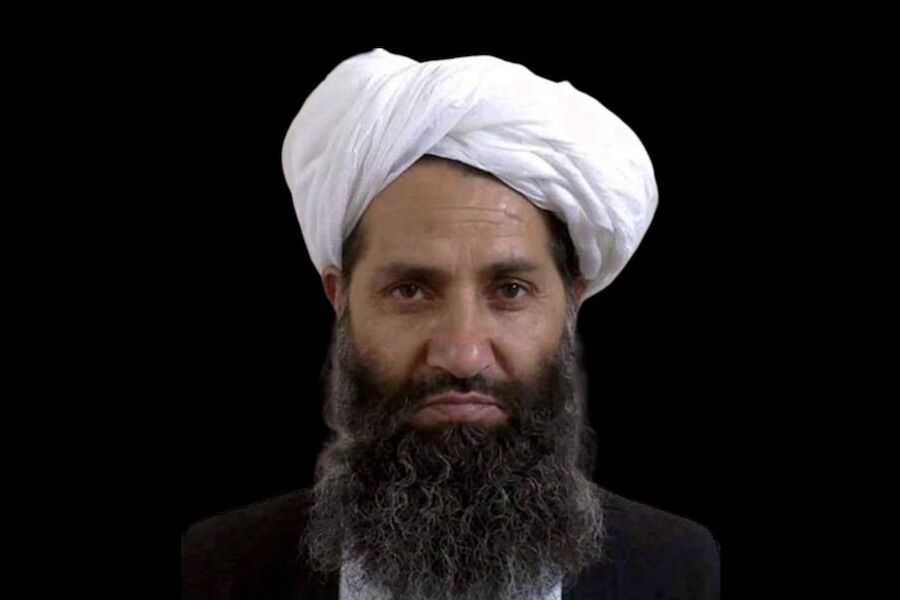Hibatullah Akhundzada was named leader of the Taliban in 2016
Some claimed him dead, others said he was hiding in Pakistan or living underground in Kandahar. The mysterious Taliban supreme leader Mullah Hibatullah Akhundzada has appeared in public for the first time since his appointment in 2016, the Afghan government announced Sunday.
“The commander of believers, the sheikh Hibatullah Akhundzada, appeared before a large congregation in the famous Darul Uloom Hakimah madrassa and spoke for 10 minutes with his brave soldiers and disciples,” said the Taliban government in a message accompanying an audio recording.
In the audio posted on Taliban social networks, Akhundzada recites prayers and blessings. According to a local source, the Taliban supreme leader arrived at the daara in Kandahar accompanied by a convoy of two vehicles.
In your speech, Akhundzada made no political comments and asked for God’s blessing on Taliban leadership.
The event in Kandahar was held under strict security measures and the posting of photos or videos was not allowed, although the Taliban press shared the 10-minute audio.
In the audio released, Akhundzada also prays for the movement’s martyrs, for the wounded fighters and for the success of the employees of the Islamic Emirate in this “great test”.
“May God reward the people of Afghanistan who fought against infidels and oppression for 20 years”, declared the religious leader in his speech.
After a quick military campaign, accelerated by the announcement of the withdrawal of US troops from the country, the Taliban returned to power last August.
With the exception of rare annual messages to mark Islamic holidays, the Taliban leader maintains the as discreet as possible about your life.
Until the withdrawal of US forces from Afghanistan in August, no one knew where it was or even if it was alive. A single photograph, with a beard and turban, was distributed by the Taliban.
Akhundzada was named leader of the Taliban in a rapid transition of command after a US drone attack killed his predecessor, the mullah Akhtar Mansour, in 2016.
Until then, Akhundzada was a relatively unknown figure and participated more in religious and legal affairs than in military maneuvers.
After being appointed as the leader of the Taliban, Akhundzada quickly obtained the loyalty of the Egyptian Ayman al-Zawahiri, the leader of al-Qaeda, who named him “emir of believers”, reinforcing his credibility in the jihadist and Sunni universe.
In his role as supreme leader, Akhundzada is responsible for maintaining the unity within the Taliban, a complex mission due to infighting that fragment the radical Islamic movement.
The Taliban announced last September that their supreme leader had lived in Kandahar “from the beginning” of the return to power and that he would “appear in public soon”.
“We have regular meetings with him on the control of the situation in Afghanistan and how to administer our government”, assured on Wednesday the governor of Kandahar, Mullah Yusef Wafa.
“He gives advice to all the leaders of the Islamic Emirate of Afghanistan and we follow his rules, his advice, and if we have a government that progresses, it’s thanks to him“he added.
As an AFP journalist noted, a “seminar” of senior Taliban officials is held annually in a secret location in Kandahar.
